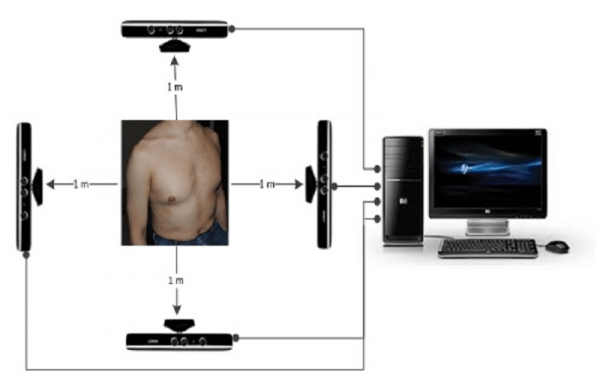
A team of researchers from the University of Warwick, the Institute of Inflammation and Ageing, University of Birmingham and Heart of England NHS Foundation Trust (HEFT) have together devised a cost-effective technique that leverages the popular sensor-based gaming console, the Xbox Kinect, to assess respiratory problems in patients. It also has the ability to detect medical conditions such as cystic fibrosis.
Cystic fibrosis is a genetic disorder that affects the lungs causing persistent infections as well as difficulty in breathing. It can be a life-threatening condition.
There is a dire need for low-cost devices that can quickly assess respiratory functions and chest wall movement to make accurate diagnosis. Since there has been a serious lack of such devices, this innovative kinect-based motion tracking system is an amazing breakthrough, merging gaming software and medical sciences.
The new “game-changing” chest wall motion as assessment system uses four Microsoft’s Xbox Kinect sensors and incredibly creates a 3D image of a patient’s torso. This enables physicians and doctors to keenly examine and evaluate how the chest wall moves and monitor the respiratory system.
“In screening, diagnostics, monitoring therapy and providing bio feedback the Xbox can be used in any condition affecting breathing,” said Dr. Babu Naidu, the study’s chief investigator and thoracic surgeon at HEFT.
For the study, the researchers initially used a resuscitation mannequin to prototype and then on healthy volunteers with cystic fibrosis. The infrared beam from the Kinect was used to measure their chest wall motions, gauging the movements by measuring the differences in projected distances. Four Kinect sensors were used, which enabled the researchers to evaluate chest movements from varied viewpoints. In this manner a 3D image of a person’s chest wall was recreated to assist in medical analysis.
Currently, spirometry is the most common approach applied to monitor and treat pulmonary-related issues and diseases. And the test results rendered by the new assessment system are as accurate as the ones a spirometer delivers.
Additionally, this kinect-based system imparts pivotal information related to chest movements that the spirometer lacks. Spirometry unfortunately has its own set of limitations and is comparatively a more expensive technique.
“We have developed a low-cost prototype which provides a more comprehensive measurement of a patient’s breathing than existing methods,” said Dr. Chris Golby, project lead at the Institute of Digital Healthcare, University of Warwick.
[Source:- Techtimes]










